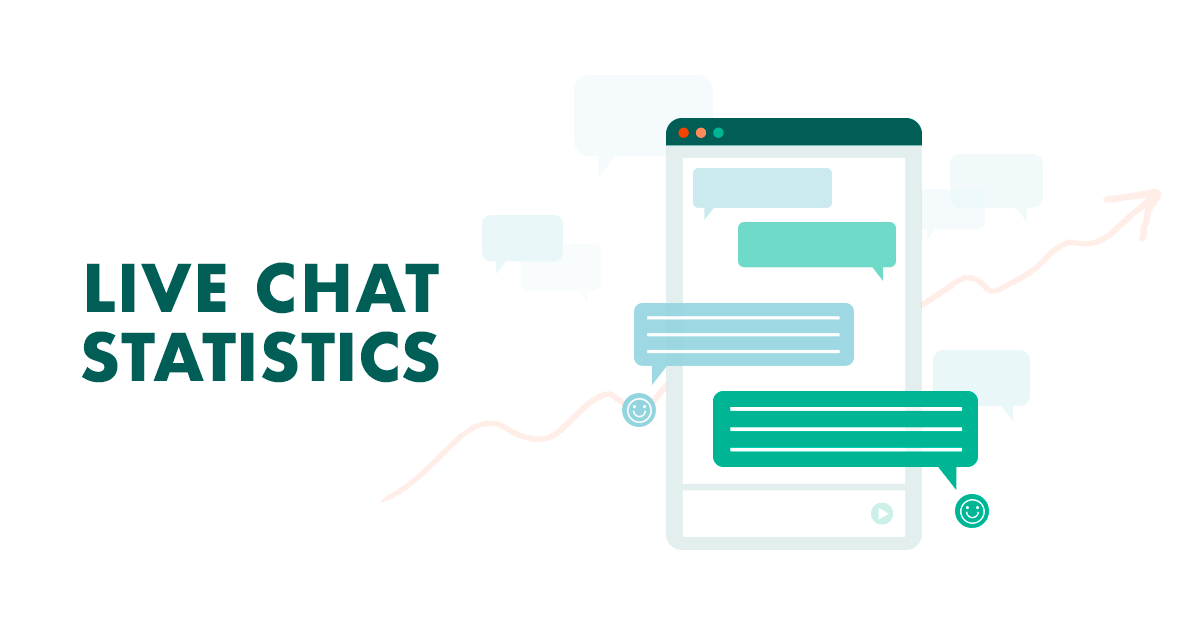Post summary:
- A new breed of B2B buyer is forcing companies to change how they communicate with them. The most challenging of all is that these buyers wants to communicate with you in real time. But, how?
- One of the most effective ways to “chat” with prospects and customers is to meet them in a channel they most prefer. Today, that is digitally and on your website via live chat.
- We share 25 live chat statistics – including our own unique research - that shows you how live chat can generate leads, increase sales and improve the overall customer experience.
Live chat used to be a “nice to have”.
In addition to phone and email, it was seen as an optional customer service offering.
But lately, things have changed.
A new breed of B2B buyer is forcing companies to adapt and digitally transform their business in order to meet their growing expectations. So, you'd better be ready to meet them!
There are several ways to do this, but the easiest way is to simply listen to what your customers want. And what they want is live chat.
Today, more than 41% of customers expect live chat on your website.
For customers that visit your website on a mobile device, this number is as high as 50%.
Therefore, if you don’t offer live chat on your website, then you’re essentially ignoring your customers.
And that’s the fastest way to lose business!
The good news is that companies that do use chat to communicate with their customers see numerous benefits, including increased sales, satisfaction and service.
Since launching SuperOffice Chat in 2017, we've helped thousands of companies use chat to communicate with their customers. It's also given us access to data and insight on how business and consumers rate, feel and respond to live chat tools.
So, let’s take a closer look as we uncover 25 live chat statistics for you.
And unlike other lists, these live chat stats are always kept up to date.
Let's begin.
Customers prefer live chat over any other contact channel
Although it’s been around since the 1970’s, live chat’s popularity is growing. And fast.
In fact, live chat is expected to continue to grow by as much as 87% in the next 12-18 months.
(In some industries, chat growth has increased by as much as 150%).
The reason for this increased adoption is because more than half of all customers prefer to chat with someone in real-time and online, rather than call a company for support.
This type of instant communication has changed the way companies interact with their customers.
But, it’s not just phone support that’s losing out to live chat – it’s other digital channels too!
J.D. Power found that live chat has become the leading digital contact method for online customers, as a staggering 42% of customers prefer live chat compared to just 23% for email, and 16% for social media or forums.
Live chat has become the leading digital contact method for online customers, as a staggering 46% of customers prefer live chat compared to just 29% for email, and 16% for social media.
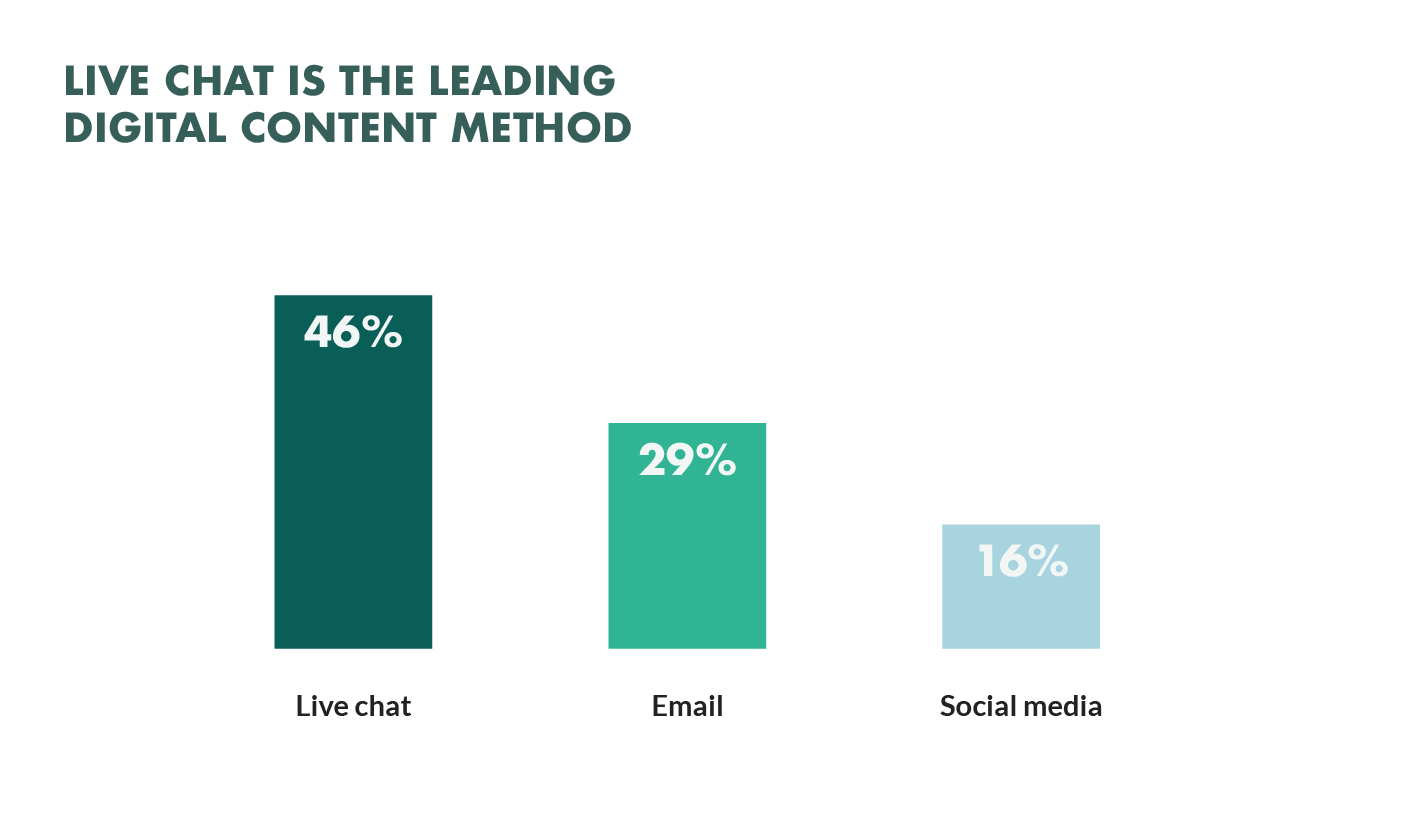
If a customer has a question, they are now more likely to visit your website and try to engage with a member of your team via live chat.
However, our own research found that only 9% of companies use live chat on their website. By allowing your customers to speak with you in real time through live chat, not only are you meeting their growing demands, but you also gain a competitive advantage.
Another benefit for using chat is that you can respond to multiple customers at once. For phone and email support, you can only respond to one customer at a time, but with live chat, you can respond to as many as 6 customers at once!
Companies that use live chat increase revenue
If you’re looking for a new way to grow your business, then live chat could be your answer. In fact, just by having live chat available on your website can have a significant impact on sales.
According to CrazyEgg 38% of consumers are more likely to buy from a company if they offer live chat support. Plus, chat is a great way to bring visitors back to your website, as Emarketer discovered that 63% of customers were more likely to return to a website that offers live chat.
Here’s the thing:
Even without anyone using chat, you can still increase revenue.
But, when your customers start to use chat during the purchase process, that’s when chat really makes an impact!
For example:
- Kayako reported that 79% of businesses said that implementing live chat resulted in increased customer loyalty, sales and revenue.
- Goinflow noted that there was a 3.84% increase in conversion rates, with a 6% overall lift in revenue.
- ICMI found that website visitors that engage with your company via live chat are worth 4.5 times more than visitors that don’t.
- Forrester noted that there was a 10% increase in the average order value when reviewing the sales from customers who engaged in a chat before making a purchase, than those that did not use chat.
That’s not all.
The same study uncovered that live chat leads to a 48% increase in revenue per chat hour and a 40% increase in conversion rate. It’s clear that live chat is providing companies with staggering results.
Adding to this, a study by AMA found that live chat can be used effectively throughout the customer journey, including an improvement in:
- Marketing awareness (+29%)
- Early stage sales development (+32%)
- Post-sales customer support (+39%)
All of which leads to an increase in revenue!
Implementing live chat couldn’t be easier. All you need to do is copy and paste a line of code onto your website (your web developer can do this too), and you can be up and running in minutes.
That’s right. You could be increasing sales and helping B2B buyers in the time it takes to boil the kettle!
Provide real-time customer support with live chat
One of the most popular ways to use live chat is for customer support.
The main benefit is that it allows your customers to get an instant response to the questions they need answering.
So, it’s not surprising that 79% of customers say they prefer live chat purely because of the immediacy it offers compared to other channels.
However, the speed of response is incredibly important.
Forrester's Raising the Bar report found that 1 in 5 customers are willing to stop using a product or service for slow response times via online chat.
So, how quickly do customers get their questions answered through chat?
Well, the average response time for emails is 12 hours.
For social media, it’s 10 hours.
By using live chat, your customers can get answers to their questions in two minutes.
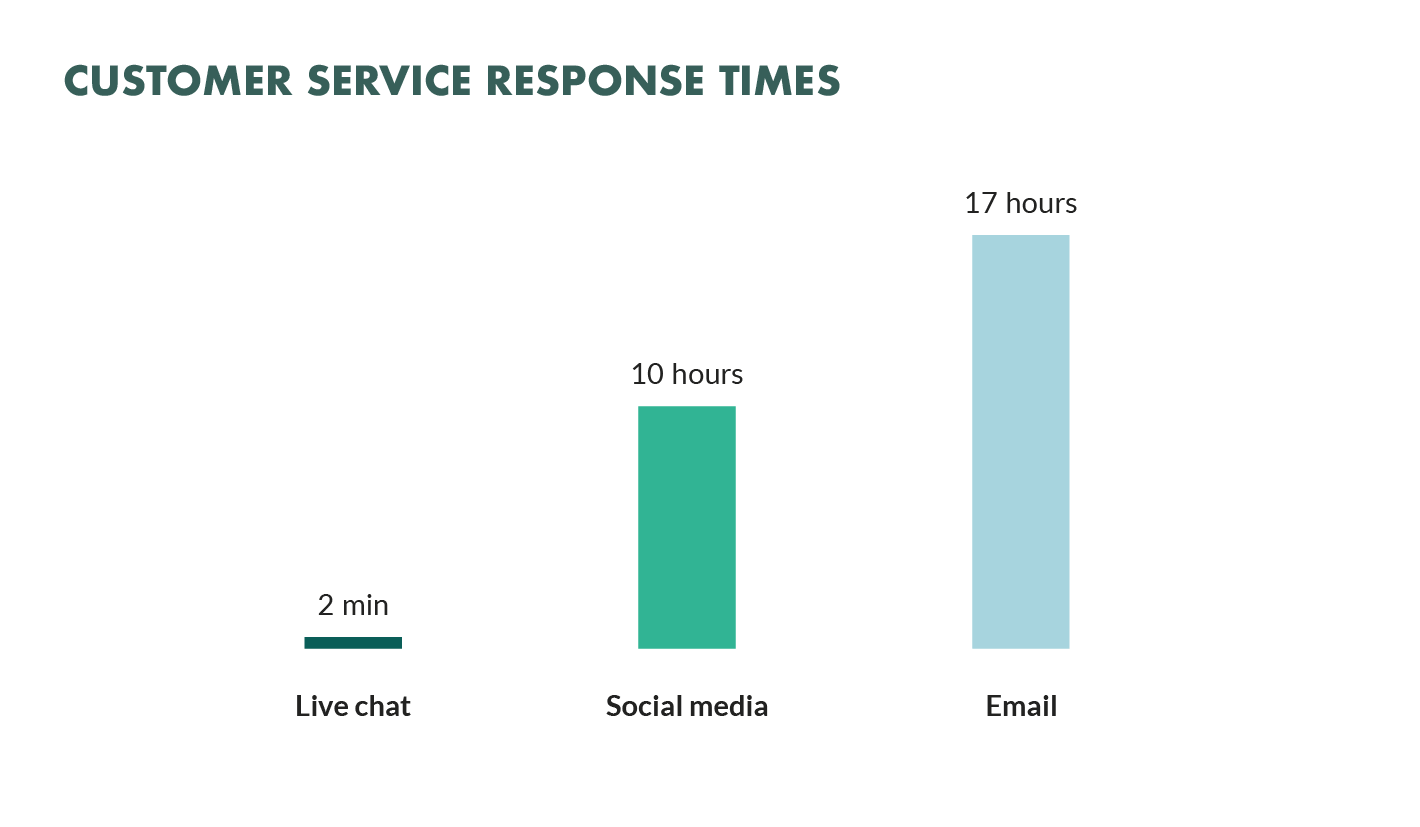
If you respond, that is.
In our study of 1,000 websites, we found that 21% of all live chat requests were ignored.
Not only does this deliver a poor customer experience, but it is not in line with customer expectations.
You can’t respond quickly to customers if you don’t respond at all.
For companies that do use live chat, what you should do is treat it as you would a phone call and never let a chat go unanswered. If you are not available, provide an option for customers that allows them to contact you by email, should they initiate a chat (a standard feature in most chat applications).
Using live chat to improve customer satisfaction rates
The good news is that if you do respond quickly, you will increase overall satisfaction rates.
Comm100 discovered that 82% of customers were satisfied with their live chat experience, compared to just 61% of email users and a worrying 44% of phone users.
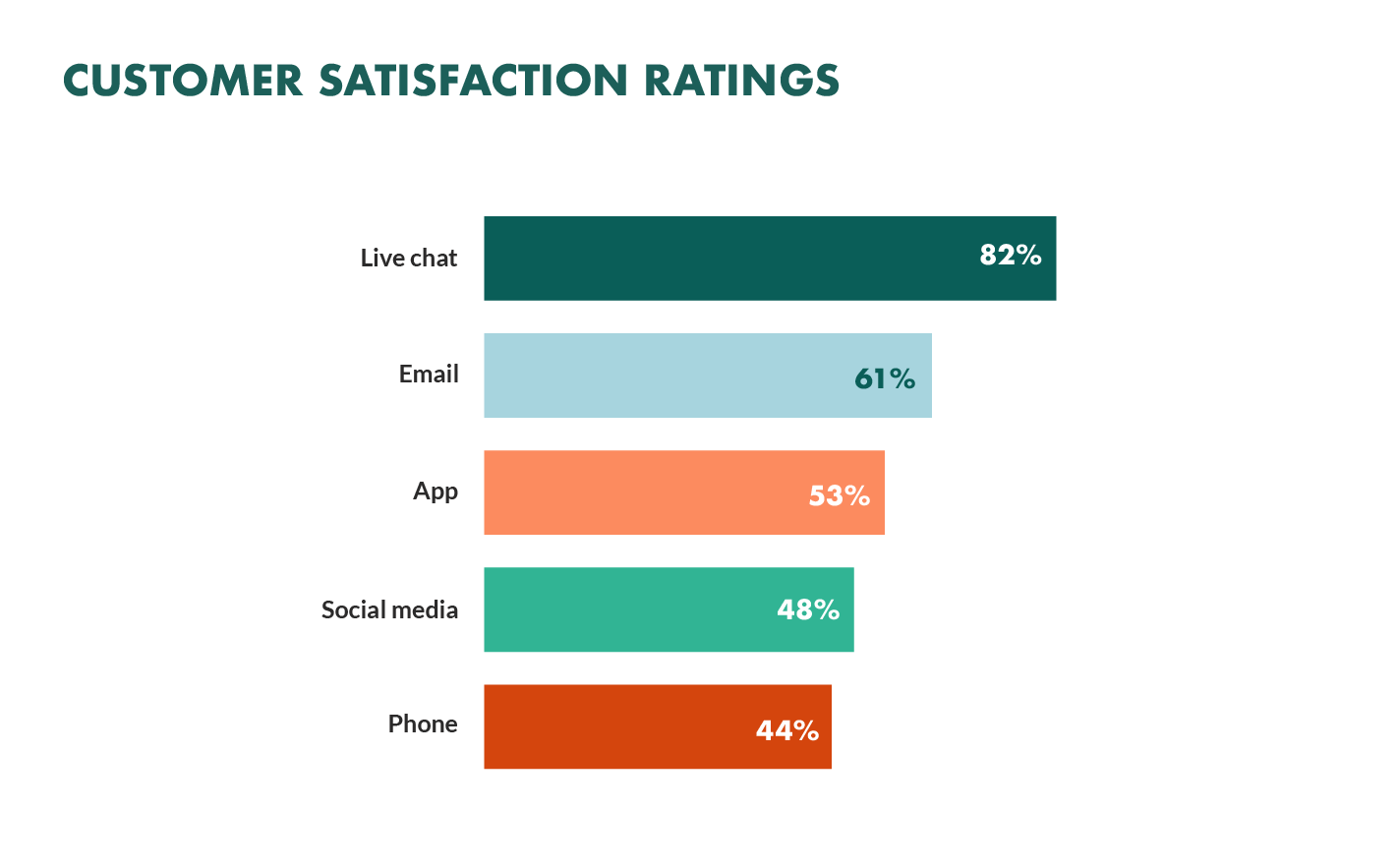
Quick responses mean happy customers and a reduced burden on your customer success team.
And the reason behind this is simple – your customers hate waiting!
In fact, it’s one of the main reasons why they stop doing business with you.
So, if you want to improve customer satisfaction rates, you need to respond quickly to live chat requests.
Unfortunately, most companies don’t.
The average wait time, in terms of how long it takes for a company to acknowledge a live chat message is 2 minutes and 40 seconds. That’s almost as long as average wait times for phone support.
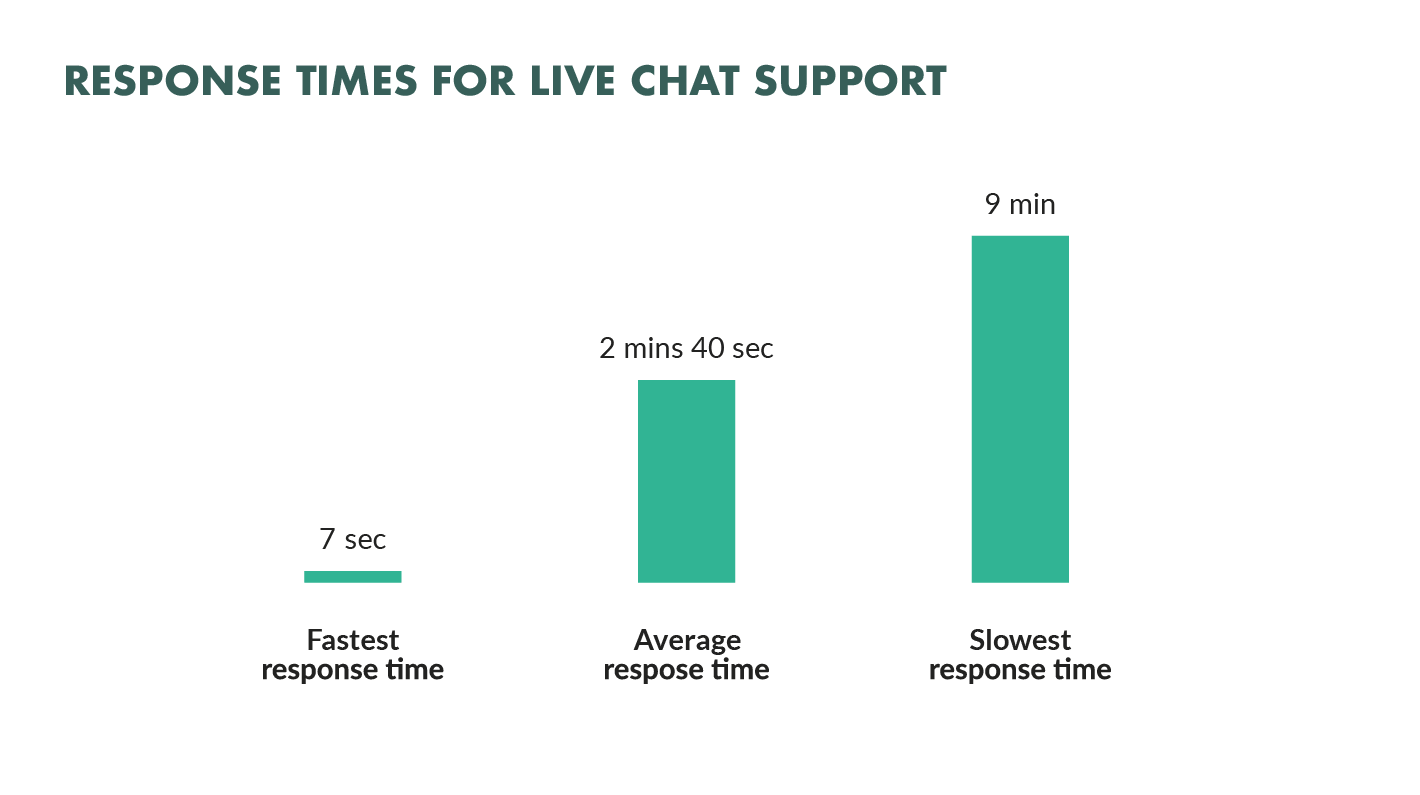
To keep your customers happy, create alerts so that a chat is automatically assigned to a free agent if unanswered within 30 seconds. You can also set expectations by including a message upfront (“We normally respond to chats within one minute”) before the chat begins, so that the customers are not kept waiting.
The fastest response time for a chat during our study was 7 (!) seconds. That’s the real-time service that your customers expect. And when you can deliver on their expectations, they will remain happy customers for a very long time.
One way to improve customer satisfaction is to send a follow up email after the chat has ended that includes a transcript of the chat session.
Our own study found that only 55% of companies actually send a copy of the chat session by email.
Another way to improve satisfaction rates is to ask for feedback from customers and the best time to do this is after the chat has ended – allowing the customer to give immediate feedback based on their experience.
Today, 45% of companies that use chat do not ask for feedback and have no way of knowing how well they serve their customers.
This voice of customer data can be extremely powerful. Positive feedback means you’re doing things right, but any passive or negative comments you receive should be addressed to improve your handling of chat with a customer.
Conclusion
Live chat is now a “must have” communication tool for any business.
As adoption rates for the companies that use chat continue to grow, it’s only a matter of time before all of your competitors are using it.
By harnessing the power of live chat, you could be:
- Increasing sales and revenue
- Providing faster customer support
- Delivering a better customer experience
Considering that live chat is one of, if not, the fasted customer communication tools to implement, there’s no reason why you shouldn’t be using it to talk directly to your customers.
If you’re not using live chat already, then now is a good time to start!
How do you use live chat in your business?
Are there any live chat statistics we forgot to include?
